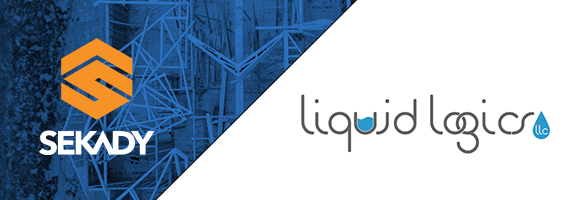Automated workflows streamline construction loan draw management by replacing slow, manual, paper-heavy processes with fast, digital, auditable ones. Key workflows include digital draw submission with automatic budget validation, automated inspection scheduling and mobile reporting, compliance and covenant validation, and integrated payment processing with real-time ledger updates. This reduces draw cycle time from weeks to days while eliminating errors.
The Problem: Manual Draw Management is Slow and Error-Prone
Construction draw management has historically been one of the slowest, most error-prone processes in construction lending.
Here's what a traditional draw looks like:
Day 1: Contractor completes work and emails draw request with attachments Day 2: Someone receives email, downloads attachments, manually enters information into spreadsheet Day 3: Someone calls inspection company to request inspection Day 5: Inspection company has inspector available Day 7: Inspector visits site, takes notes by hand, takes photos Day 8: Inspector returns to office, writes report, emails to lender Day 9: Lender receives email, manually reviews against draw request Day 10: Lender creates approval form, emails to credit committee Day 11: Credit committee approves, emails approval back Day 12: Someone manually creates payment form, enters into banking portal, processes payment Day 13: Payment clears Day 14: Lender updates spreadsheet to reflect paid draw
Total: 14 days. Multiple manual steps. Multiple chances for error.
Then came automated workflows.
With automated workflows:
Day 1, 2 PM: Contractor completes work, submits draw request through app Day 1, 2:15 PM: System validates documentation, automatically schedules inspection Day 2, 10 AM: Inspector visits, uses mobile app to verify work, submits report same day Day 2, 10:15 AM: Lender is notified, reviews findings, approves draw Day 2, 2 PM: Payment automatically initiates Day 3, 9 AM: Payment clears
Total: 2 days. All automatic. Zero errors from manual entry.
The difference is automated workflows.
What Are Automated Workflows?
Automated workflows are processes where software automatically performs steps that used to require human intervention.
Instead of:
- Person A receives something → manually reads it → manually enters information → emails Person B
- Person B receives email → manually reads information → makes decision → manually documents → emails Person C
With automation:
- Person A enters information once → system automatically validates → system automatically routes to Person B → Person B sees pre-filled information with all context → makes decision → system automatically processes
The key difference: information flows automatically between steps. No manual re-entry. No email handoffs. No delays.
The 4 Major Automated Workflows in Construction Loan Draw Management
Workflow 1: Digital Draw Request & Submission
Traditional Process (Manual):
- Contractor prepares draw request (collects invoices, takes photos, gathers documents)
- Contractor emails everything to lender
- Someone receives email, downloads attachments
- Someone manually enters draw amount into spreadsheet
- Someone manually reads invoices to understand what work was done
- Someone manually looks for lien waivers (searches through email folder)
- Someone manually checks if all documents are included
- If documents are missing, someone sends email asking for more documents
- Eventually, someone confirms draw request is complete
Automated Process:
- Contractor logs into secure portal
- System shows required documents checklist
- Contractor uploads documents directly to system
- System automatically validates:
- All required documents are included
- Draw amount doesn't exceed approved budget
- All prior lien waivers are on file
- If anything is missing or over-budget, system tells contractor what's wrong
- Contractor corrects issues and resubmits
- Once everything is valid, draw automatically advances to next stage
Time Saved: 2-3 days of back-and-forth eliminated. Draw goes from "incomplete" to "ready for inspection" in hours instead of days.
Errors Prevented: Incomplete submissions, missing documents, over-budget requests never get approved.
Key Automation Features:
- Mandatory field validation (contractor can't submit without all fields)
- Automatic document type detection (system knows what documents it has)
- Budget checking (system prevents over-budget submissions)
- Required document enforcement (submission blocked if required docs missing)
- Automatic rejection of incomplete packages (contractor is told immediately what's wrong)
Workflow 2: Inspection Automation & Mobile Reporting
Traditional Process (Manual):
- Lender receives draw request
- Lender calls inspection company
- Phone tag ensues to schedule available inspector
- Days pass waiting for scheduling
- Inspector visits site (days later)
- Inspector takes notes by hand
- Inspector takes photos with personal camera
- Inspector returns to office
- Inspector manually uploads photos
- Inspector manually types up handwritten notes into report
- Inspector emails report to lender
- Email sits in lender's inbox for days
- Eventually lender reads inspection report
- Lender compares to draw request (manually)
Automated Process:
- Draw request is submitted to system
- System automatically sends inspection order to all available inspectors
- Inspection scheduling system shows availability
- Inspector with first availability confirms
- Inspector receives notification with project details, contractor's photos, inspection checklist
- Inspector visits site with mobile app
- Inspector uses app to verify work against checklist
- Inspector takes geotagged photos (proves location)
- Inspector marks items complete/incomplete on checklist
- Inspector adds notes directly in app
- Inspector submits from site using mobile app
- Report immediately appears in lender's system (not via email)
- System automatically compares inspector's findings to contractor's claims
- Discrepancies are automatically flagged
Time Saved: Days of scheduling delay eliminated. Inspector report in lender's system same day instead of days later. No time spent on manual comparison—system does it automatically.
Errors Prevented: Scheduling confusion, lost reports, manual data entry errors, photos without clear documentation (geotagging proves where/when they were taken).
Key Automation Features:
- Automatic inspector assignment based on location and availability
- Mobile app for on-site work (no return-to-office delays)
- Automatic photo geotagging (proves location)
- Automatic timestamping (proves when)
- Structured inspection checklists (consistency)
- Real-time sync (report available immediately)
- Automatic comparison of contractor claims vs. inspector findings
Workflow 3: Compliance and Covenant Validation
Traditional Process (Manual):
- Inspection is complete
- Someone manually checks: "Did we collect all lien waivers?" (digs through file folders)
- Someone manually checks: "Is this draw within budget?" (checks spreadsheet)
- Someone manually checks: "Is insurance current?" (looks for insurance certificate)
- Someone manually checks: "Are permits current?" (looks for permit documents)
- If any document is missing, email is sent to contractor asking for it
- Contractor responds (days later)
- Someone checks received document
- If all checks pass, draw is approved
- If anything is wrong, draw is delayed
Automated Process:
- Draw request submitted
- System automatically checks:
- Are all prior lien waivers on file and digitally signed? (automated tracking)
- Is draw amount within approved budget? (automated calculation)
- Is insurance current? (automated expiration tracking)
- Are all permits current? (automated document expiration tracking)
- Are any covenant thresholds being exceeded? (automated monitoring)
- System flags any items not meeting requirements
- System holds draw and notifies lender and contractor
- Contractor corrects issues (system may automatically send reminders for expiring documents)
- Once all items are resolved, system automatically approves or routes for approval
Time Saved: Manual compliance checking eliminated. Documents that need renewal are automatically flagged before they expire. No delays waiting for contractors to respond—system alerts them automatically.
Errors Prevented: Expired documents, missing lien waivers, over-budget draws, covenant breaches—all prevented by automated checking.
Key Automation Features:
- Automatic lien waiver tracking (which waivers are received, which are pending)
- Budget-in-balance checking (prevents over-budget draws)
- Document expiration alerts (reminds before expiration)
- Covenant monitoring (tracks all key covenants)
- Automatic flagging of non-compliance
- Automatic remediation reminders
Workflow 4: Digital Disbursement and Record-Keeping
Traditional Process (Manual):
- Draw is approved
- Someone manually creates payment form
- Someone manually enters contractor's account information
- Someone manually enters payment amount
- Someone manually enters payment date
- Someone manually enters draw number and project details
- Someone manually reviews the form for errors
- Someone manually logs into banking portal
- Someone manually enters the payment information again (yes, again)
- Someone manually authorizes the payment
- Payment is processed
- Someone receives confirmation from bank
- Someone manually updates loan spreadsheet
- Someone manually updates accounting records
- Someone emails contractor about payment
- No audit trail of who approved what
Automated Process:
- Draw is approved
- System automatically retrieves:
- Contractor's account information (already on file)
- Payment amount (already calculated)
- Payment method preference (already stored)
- Contractor's preferred payment method (ACH, wire, check)
- System automatically prepares payment file
- System automatically initiates payment through bank integration
- System automatically receives confirmation from bank
- System automatically updates loan ledger
- System automatically posts to accounting system
- System automatically sends notification to contractor
- Complete audit trail is created (who approved, when, why, result)
Time Saved: Hours of manual data entry and review eliminated. Payment processing that used to take hours now happens in minutes.
Errors Prevented: Data entry typos, duplicate payments, payments to wrong accounts, missed updates to accounting records—all prevented.
Key Automation Features:
- Stored contractor information (no manual entry)
- Automatic payment file preparation
- Bank integration (no manual banking portal entry)
- Automatic ledger updating
- Automatic accounting system posting
- Automatic contractor notification
- Complete audit trail
The Complete Automated Draw Workflow: End-to-End
Here's how all four workflows work together:
Contractor completes work
↓
Contractor submits draw in app (Workflow 1)
↓
System validates budget and docs automatically
↓
Inspection automatically scheduled (Workflow 2)
↓
Inspector notified on mobile device
↓
Inspector visits site next day
↓
Inspector verifies work using mobile app
↓
Inspector submits report from site
↓
System receives report, compares to contractor's claim
↓
System runs compliance checks (Workflow 3)
↓
If all checks pass:
System auto-approves or routes for 1-click approval
↓
If any issues:
System alerts lender and contractor
Contractor corrects issues
System re-checks
↓
Approval confirmed
↓
System initiates payment automatically (Workflow 4)
↓
Payment clears
↓
System updates ledger automatically
↓
System posts to accounting automatically
↓
System notifies contractor and stakeholders automatically
↓
Complete audit trail is created automatically
TOTAL TIME: 2-3 days (vs. 14+ days manual)
MANUAL STEPS: ~3 (vs. 40+ steps manual)
ERROR RATE: ~0% (vs. 5-10% manual)The Business Impact of Automated Workflows
Time Savings
- Draw processing time: 14 days → 2 days (7x faster)
- Staff time per draw: 4-6 hours → 0.5 hours (90% reduction)
- Time to approval: Days → Hours
- Staff time freed up: 50+ hours per 50 projects per year
Error Reduction
- Data entry errors: Eliminated (no manual re-entry)
- Incomplete submissions: Eliminated (system prevents)
- Over-budget approvals: Eliminated (system prevents)
- Duplicate payments: Eliminated (system tracks)
- Late compliance: Eliminated (system tracks expiration dates)
Cost Impact
| Metric | Manual | Automated |
|---|---|---|
| Staff cost per draw | $200-300 | $25-40 |
| Cost of errors per year | $50K-150K | $5K-10K |
| Contractor satisfaction | Lower (slow approval) | Higher (fast approval) |
| Compliance risk | Higher (manual tracking) | Lower (automated monitoring) |
| Scalability | Limited by staff capacity | Scales with software |
Financial Example: 30 active projects, 150 draws per year
- Manual processing cost: $30-45K annually + $50-150K error costs = $80-195K
- Automated processing cost: $3.75-6K annually + $5-10K error costs = $8.75-16K
- Annual savings: $71-186K
Real-World Implementation: Before and After
Before Automation (Manual Process)
Day 1-3: Contractor completes phase, tries to find all required documents (invoices, lien waivers from subs, photos). Takes multiple days because subs are slow providing lien waivers.
Day 4: Contractor finally has everything, emails draw request to lender with 8 different attachments.
Day 5: Lender's office receives 500 emails per day. Draw request sits in inbox unread.
Day 6: Someone finds the email, starts reading it. Manually downloads 8 attachments to desktop.
Day 7: Someone calls inspection company to request inspection. Reaches voicemail. Calls again.
Day 8: Inspection company calls back, says inspector not available for a week.
Day 10: Inspector finally available, visits site, takes photos and notes by hand.
Day 11: Inspector returns to office, manually types up inspection report, emails to lender.
Day 12: Lender receives email, starts reviewing draw. Manually compares contractor's photos to inspector's findings. Checks spreadsheet to see if budget is sufficient. Digs through file folder looking for prior lien waivers.
Day 13: Lender notices something unclear, sends email to contractor asking for clarification.
Day 14: Contractor responds to email.
Day 15: Lender approves draw (finally), creates payment form, manually enters payment information, authorizes payment.
Day 16-17: Payment clears.
Day 18: Lender updates spreadsheet and accounting system to reflect payment.
Day 19: Contractor finally receives payment, can pay their subs.
Total: 19 days. Contractor is frustrated. Subs are waiting for payment. Lender used 12+ hours of staff time.
After Automation (Sekady Workflow)
Day 1, 3 PM: Contractor completes phase, opens Sekady app. App shows required documents checklist. Contractor uploads invoices, photos, and prior lien waivers. System automatically validates everything is there. System checks budget and confirms draw is within limit. Contractor hits submit.
Day 1, 3:15 PM: System receives submission. System validates all documents are present. System automatically sends inspection order to available inspectors in the area.
Day 1, 4 PM: Inspector receives notification on mobile device. Inspector sees project details, contractor's photos, and inspection requirements. Inspector confirms availability for next day at 10 AM.
Day 2, 10 AM: Inspector visits site with mobile app. App displays contractor's claims and photos for comparison. Inspector takes geotagged photos. Inspector marks inspection items complete/incomplete on app checklist. Inspector verifies 100% of claimed work is actually complete. Inspector submits report from site.
Day 2, 10:15 AM: Lender receives notification that inspection is complete. Lender opens Sekady, sees inspection report with photos. System has automatically compared inspector's findings to contractor's claims—they match. System has automatically verified budget is within limits. System has automatically confirmed all prior lien waivers are on file. System shows "Ready to Approve."
Day 2, 10:30 AM: Lender clicks "Approve." System automatically initiates ACH payment to contractor's account (already on file). System automatically updates loan ledger. System automatically posts to accounting system. System automatically sends notification to contractor.
Day 3, 9 AM: Contractor wakes up to notification that payment has cleared. Contractor's account has $100K. Contractor can immediately pay their subs.
Total: 2 days. Contractor is thrilled. Subs get paid quickly. Lender used 0.5 hours of staff time.
Key Benefits of Automated Workflows
1. Speed
- 7x faster (14 days → 2 days)
- Faster approval means faster payment
- Faster payment means better contractor relationships
- Faster payment means faster project progress
2. Accuracy
- Errors eliminated through automation
- Compliance automatically verified
- Audit trail automatically created
- Less risk of fraud or overpayment
3. Scalability
- Manual process limits you to ~20-30 concurrent projects
- Automated process lets you manage 100+ projects
- Same team can handle 5x more projects
- Grow without hiring more staff
4. Consistency
- Every draw processed the same way
- No variation based on who's handling it
- Standards are enforced automatically
- Quality is consistent
5. Compliance
- Covenants automatically enforced
- Documents automatically tracked
- Expiration dates automatically alerted
- Audit trail is complete and automatic
- Regulatory ready
6. Relationships
- Contractors get faster funding (they love this)
- Lenders have fewer disputes (happy contractors)
- Transparency is automatic (everyone sees status)
- Communication is built-in (no lost emails)
7. Risk Reduction
- Incomplete work can't be funded (system prevents it)
- Over-budget draws prevented
- Covenant breaches caught immediately
- Fraud risk reduced through verification automation
Conclusion: Automated Workflows Transform Construction Loan Management
Construction loan draw management used to be slow, manual, and error-prone. Automated workflows have transformed it into a fast, accurate, scalable process.
The difference is dramatic:
- 14 days → 2 days
- 40 manual steps → 3 manual steps
- 5-10% error rate → ~0% error rate
- 4-6 hours staff time per draw → 0.5 hours
Sekady's automated workflows handle the entire draw-to-disbursement cycle without manual intervention at each step. Information flows automatically. Decisions are made with complete information. Approvals are automatic or one-click. Payment is initiated automatically. Records are updated automatically.
The result is faster funding, better relationships, fewer errors, and the ability to scale your business dramatically.
Ready to transform your draw management with automated workflows? Learn how Sekady automates the complete draw cycle by visiting our FAQ page or scheduling a demo to see the workflows in action.




